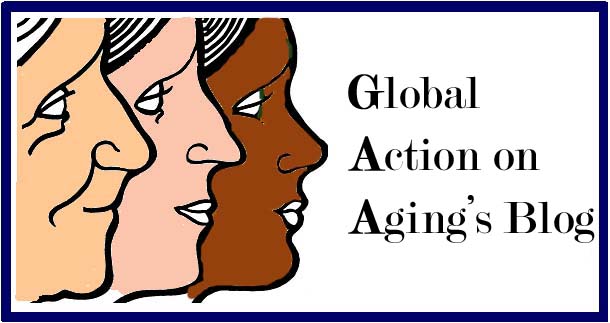A couple of weeks ago I attended a meeting at the New York Association on HIV over 50. Its members are men and women over the age 50 who are living with HIV or AIDS. Some are considered long time survivors. At the meeting we talked about how different the face of HIV was back in the 1980's compared to today. Some members recalled how they lost so many friends, lovers and partners to HIV/AIDS at such a fast pace. Often death was drawn out and very painful. They are still sad that most of the worlds’ advances came too late for their friends and lovers.
It was clear to me that witnessing this has left a huge impact on a lot of them and the concern everyone seemed to have was that HIV has vanished from the spotlight, “people are still dying, and to think that doesn't happen anymore and isn't newsworthy is a problem. “Kids aren't getting the message today that we got many years ago that this is a fatal disease and it's not to be taken lightly.” Someone mentioned a magazine advertisement that upset him. The pharmaceutical company that produced the ad said that today all you need is one pill per day to stay healthy if you get diagnosed with HIV. My friend questioned what kind of message this tactic is sending out to the uninfected people. He strongly believes it gives people a false message: The advertisement is suggesting that it's not a “big deal” if you get infected by HIV.
It's a fact that new HIV infections are slowly diminishing. But even today, every 9.5 minutes someone in the US is infected with HIV producing around 50 000 new infections every year. A large number are young people; The most severely affected are gay and bisexual men. They account for 61 percent of all the new infections. Why is that?
Could it be that the young people end up thinking HIV is not a problem anymore/ Today HIV positive people look healthy. And, today, fewer people die from HIV/AIDS as each year passes. Should pharmaceutical companies change the way they promote their new medications? Unlike the long time survivors, today’s younger persons have not seen the horrors the virus wrought decades ago. They have not lost their friends, lovers and partners to AIDS. In the 80's the virus was real and it was constantly up in your face. Everyone I spoke to at the meeting told me that once they understood that HIV/AIDS was an epidemic, they made sure to practice safe sex.
How can older persons with HIV and their supporters reach out to change the attitude younger people have about HIV?
A solution to this problem could be a more inter-generational approach. We need an ongoing dialogue between generations. What if long-time survivors got the message about HIV prevention across to the younger generation. The stories from the past must still be told. We need a more visual message. Perhaps we need to scare people into practicing safe sex. We need to reach the uninfected; our campaigns needs to target everyone, not just one group. People need to know that HIV is still here and it's still killing people.
Sanna Klemetti
smklemetti@gmail.com

No comments:
Post a Comment